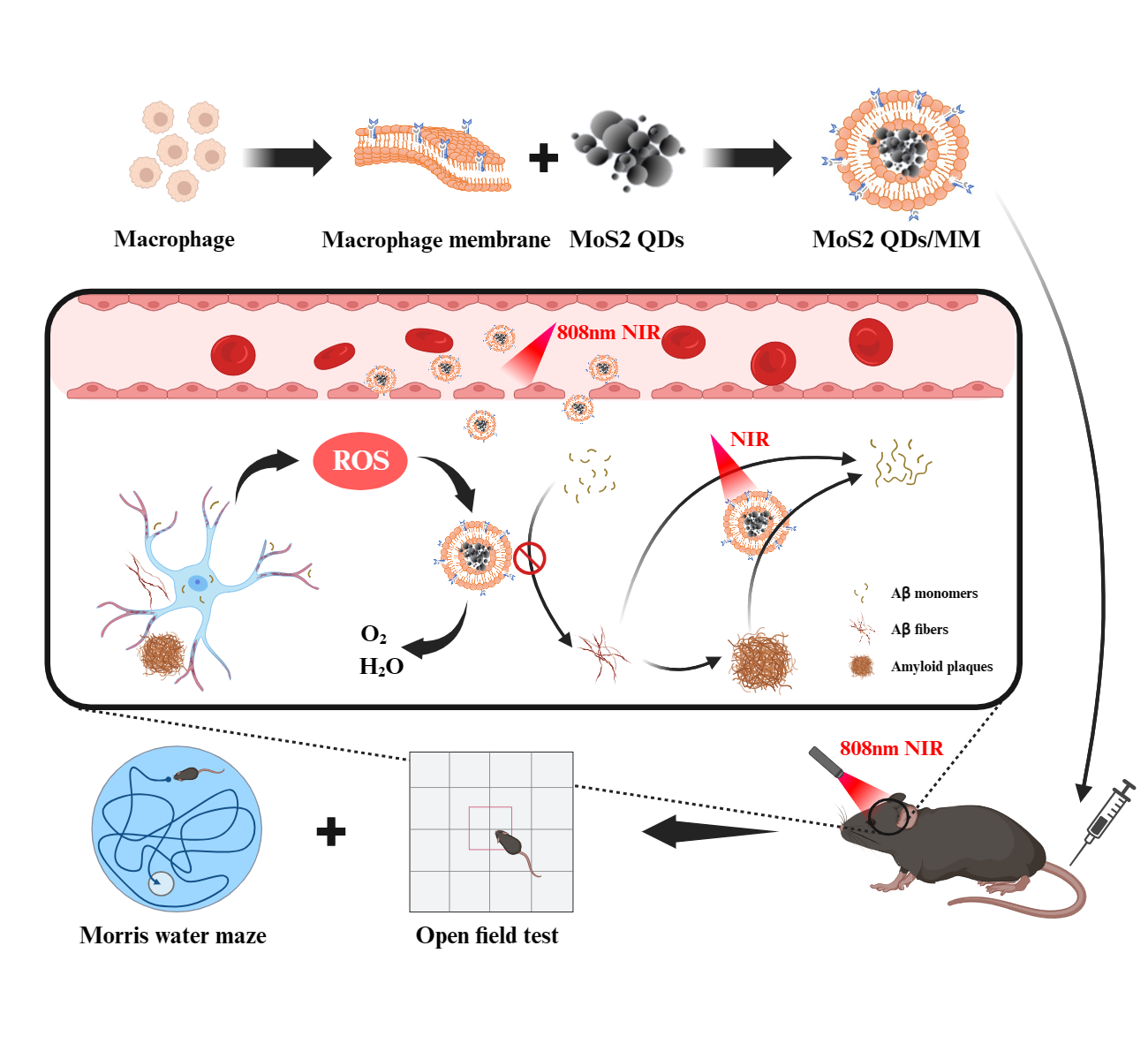Recently, a paper titled "Macrophage Membrane-Modified MoS2 Quantum Dots as a Nanodrug for the Combined Multi-Targeting of Alzheimer's Disease" has been published in the top journal (Advanced Healthcare Materials ) by the team of Associate Professor Meng Xie, School of Pharmacy, Jiangsu University (https://doi.org/10.1002/adhm.202303211).

Figure 1. Schematic of the preparation of MoS2 QDs/MM and multi-target combination therapy for AD
Alzheimer's disease (AD) is a complex and fatal neurodegenerative disease resulting from a combination of factors. The pathways of AD are intertwined, and the various pathological factors are dynamically related and relatively independent, resulting in the poor efficacy of nanomedicine candidates against a single therapeutic target and the difficulty of crossing the blood-brain barrier. Therefore, it is a breakthrough to improve the therapeutic efficacy of AD by rationally adopting multiple therapeutic strategies and accurately and efficiently inhibiting multiple pathological targets.
The research group discovered that molybdenum disulfide (MoS2) has unique enzyme-like activity for scavenging free radicals. Additionally, MoS2 has good photothermal properties and can ablate Aβ1-42 protofibrils. Furthermore, MoS2 can effectively inhibit the aggregation of Aβ1-42 through hydrogen bonding and electrostatic interactions. Therefore, the authors attempted to utilize the multifunctional properties of MoS2 to improve the overall treatment of Alzheimer's disease.
In this thesis, the authors successfully obtained MoS2 QDs/MM nanosystems by using macrophage membrane modification of MoS2 QDs to enable immune evasion and inflammation targeting. Combined with photothermal therapy, the synergistic antioxidative stress inhibits Aβ1-42 aggregation and ablates Aβ1-42 protofibrils, resulting in accurate and effective inhibition of multiple AD pathological targets. In vivo behavioral studies further demonstrated that multi-target combination therapy overcame the drawbacks of single-target therapy, resulting in significant improvements in exploratory and learning abilities in APP/PS1 mice. The multi-target synergistic nano-system designed in this study shows promise in the treatment of Alzheimer's disease with crossed pathological pathways.
This work was supported by the Natural Science Foundation of Jiangsu Province (Project No. BK20201419) and the China Postdoctoral Foundation (2021M701502).